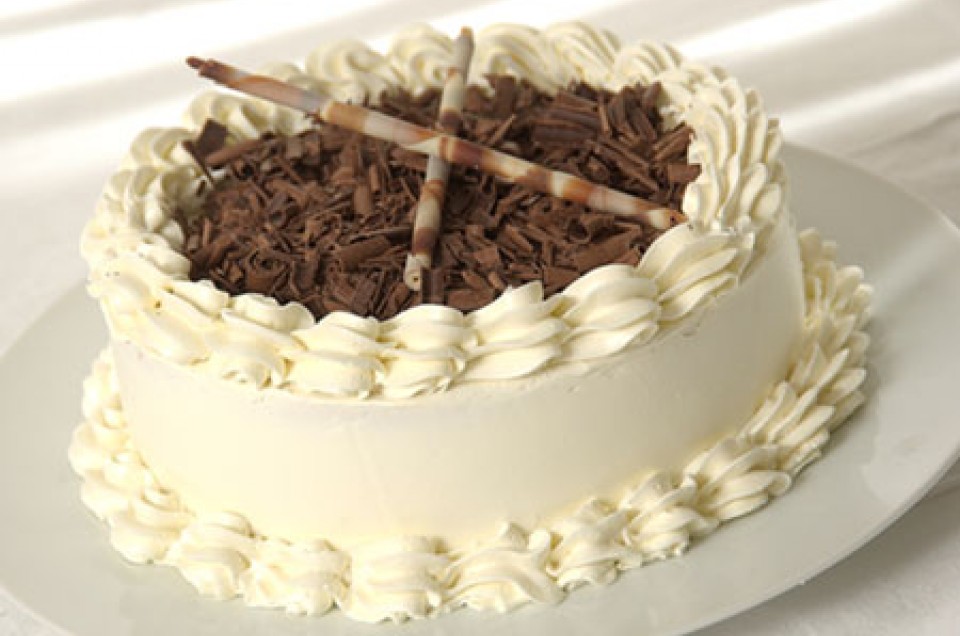


When it’s time for a cake to put on its party clothes, only one frosting will do: buttercream.
For those who lust for the silky, smooth, pipeable and luscious texture of great bakery frosting, there’s simply no substitute for this magnificent emulsion of eggs, butter and sugar. Let’s face it, buttercream is dead sexy. It belongs on any list of foods of love; there’s a reason no wedding cake should be without it!
There are also a number of reasons home bakers don’t go into this territory. Buttercream frosting can be confusing, intimidating, and time consuming, and when you can cover a cake with a quick combination of soft butter, confectioners’ sugar, and a little milk and vanilla, why wouldn’t you?
Let’s tackle that list of scary adjectives, one by one.
Confusing.
Italian? Swiss? French? German? Simple? Decorator's? Fondant? Too many names and techniques. How do I choose? Here are the differences. I’ve organized the types in order from most to least likely (for me, anyhow) to make.
American: For any culinary school graduate, this one doesn’t really “count” as real buttercream. It’s the combination of butter, confectioners’ sugar, milk, and some flavoring referred to above.
Italian: A meringue is made with egg whites and sugar, and sugar syrup cooked to at least the soft ball stage (240°F) is poured into it with the mixer running. This sets the egg whites and forms a stable base for the frosting. Once the meringue is cooled to 80°F (with the mixer running the whole time), soft butter is added, a lump at a time, until the frosting comes together.
Swiss: Egg whites and sugar are cooked together to 160°F over a hot water bath, then transferred to a mixing bowl and whipped before adding the butter.
French: The method is the same as for Italian buttercream, but whole eggs or egg yolks are used instead of whites. VERY rich, and if you’re not coloring the frosting, a very pale golden color. French buttercream has a lower melting point, because of the extra fat from the egg yolks.
Fondant: Fondant mixed with an equal amount of butter.
Decorator’s: Some would call this “practice” frosting: a mixture of vegetable shortening, butter, flavorings, and confectioners’ sugar, adjusted with milk as necessary. The higher melting point of shortening makes this mixture better for decorations that need to hold a hard edge, such as roses.
Intimidating: There’s usually an awkward stage just before the frosting comes together when it looks broken and hopeless: more on this shortly.
Time consuming: This isn’t a spur of the moment project. You have to remember to take the butter out to soften. You have to be able to stay with the sugar syrup and monitor it as it cooks. And you have to wait for the meringue to be cool enough to add any butter. See confessions below.
Still game? Let’s make my favorite frosting: Italian buttercream.
First move? get the butter out of the fridge. It doesn't hurt to do this the day before you make the frosting, depending on the temperature in your house. 65 to 70 degrees is the ideal range. Like Goldilocks, you're looking for a certain texture.
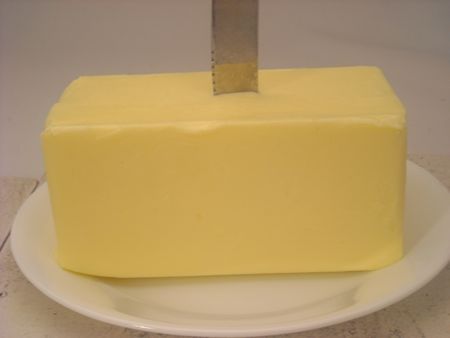
Adding hard lumps of butter will mean a frosting with smaller hard lumps of butter in it; this is a real pain if you plan to pipe the frosting, because the lumps can be small enough to escape detection, but still be plenty big enough to clog your pastry tip.
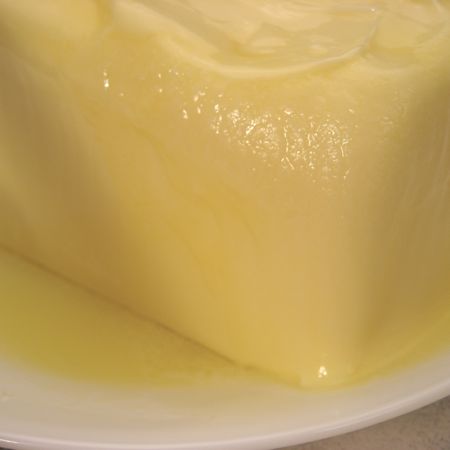
This butter is so warm it's starting to melt and break. If you added this to warm meringue, you'll have a sad, greasy mess. Emulsions tend to break at extremes of hot and cold, and this one's no different.
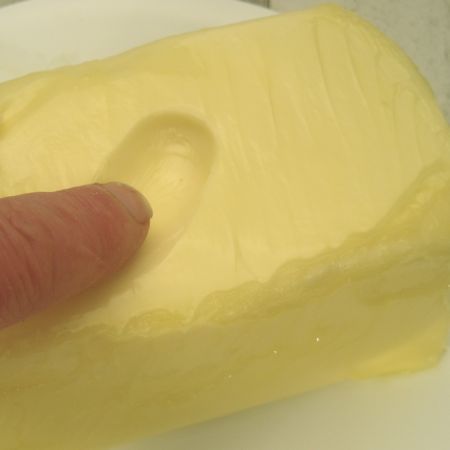
The butter should be soft enough to be indented with a light touch of your finger.
Next: hunt and gather equipment. This is really a recipe for the stand mixer. You need both hands to do what you need to do, and most hand mixers don't have the horsepower to accomplish this task. My 5-quart Viking has been my champion for more batches of frosting than I can count.
You'll need a candy or digital thermometer that can register up to 400°F; a small (non-stick is best if you have it) saucepan; a flexible ice pack or a large zip-top bag that can hold crushed ice, and a nylon spreader to scrape the bowl. A cup of coffee for yourself wouldn't hurt, either.
This next bit is somewhat tricky, since it involves some kitchen rhumba with two partners at once. The idea is to have your meringue up and ready at the same time the sugar syrup hits its temperature window. I do this by getting the egg whites or meringue powder and water ready in my mixing bowl first.
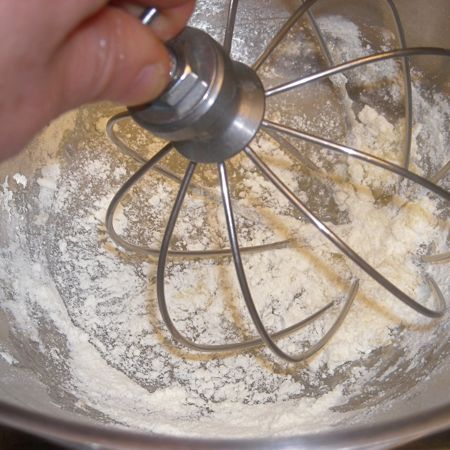
I use the mixer's whisk attachment to moisten the powder (no reason to make another tool dirty), then set up the mixer so it's ready to go. A little pinch of salt here makes a big difference between a frosting that's cloyingly sweet and one that's downright intriguing.
Measure out the sugar for the meringue and have it handy next to the mixer. Now get ready to head for the stove.
Put the sugar for the syrup into your small saucepan and add the water.
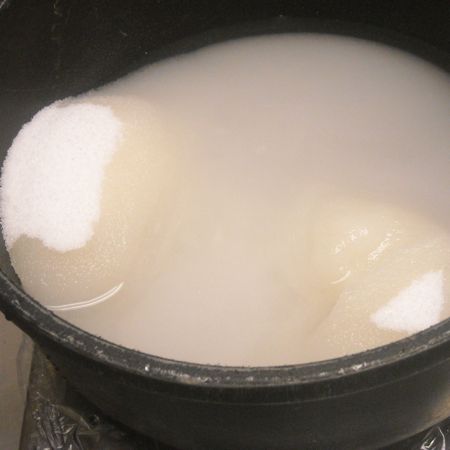
Bring to a simmer, stirring occasionally to dissolve the sugar.
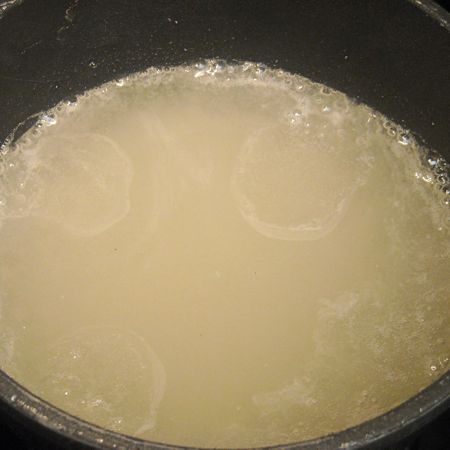
Soon your syrup will be boiling.
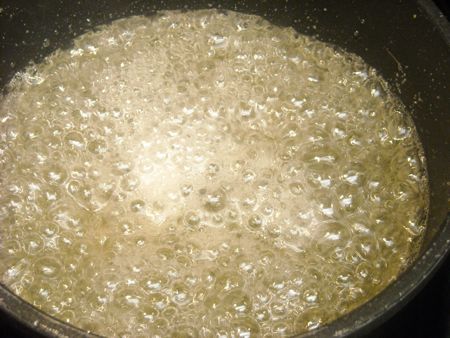
Put the heat on low to medium, and hie yourself hence to the mixer.
Turn the mixer on high. First you'll see the mixture begin to get foamy.
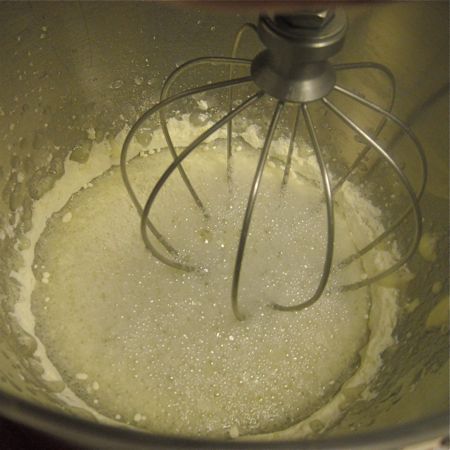
Remember the nylon spreader I said you needed? Time to get in here and scrape the bowl.
Next the egg whites will become opaque and start to build in volume as more air is beaten in.
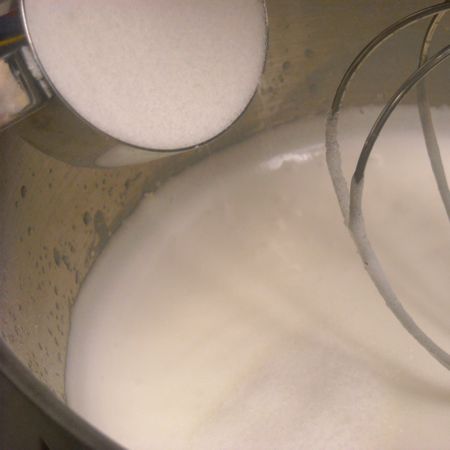
Time to sprinkle in the sugar, with the mixer running. Once it's all in, time to look at our sugar syrup.
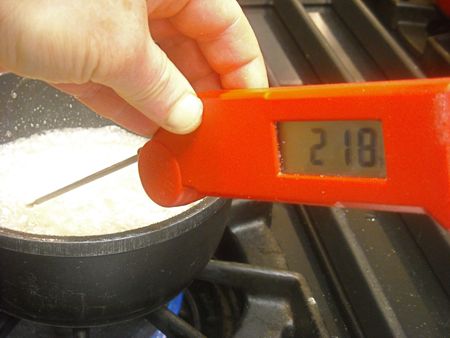
Still has a way to go, but at 218°F most of the water has now cooked off.
Let's see how the meringue is doing.
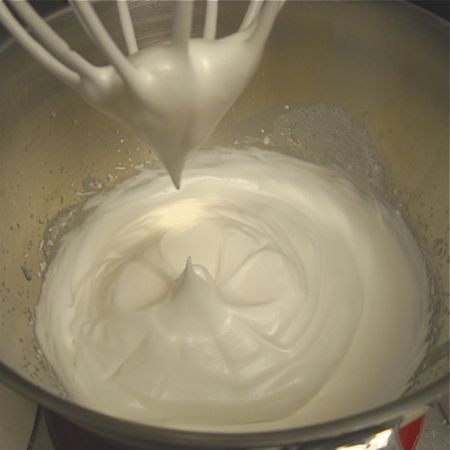
There we go. At this point I'll stop the mixer and focus on the syrup until it's ready to bring over.
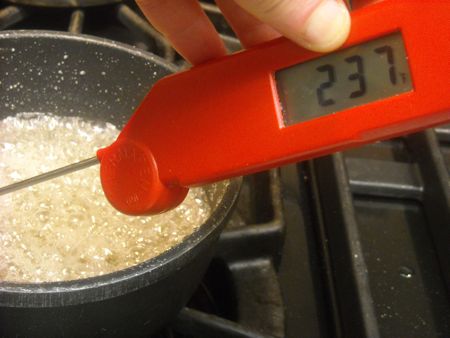
Not yet, but it won't be long now.
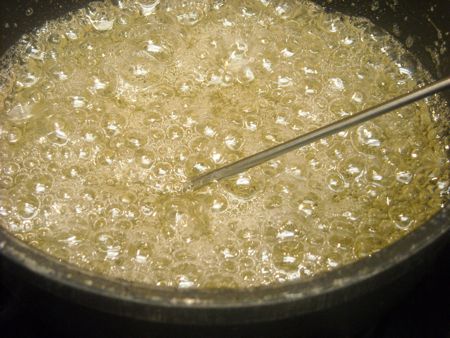
This is how the syrup looks at 248°F. Time to pull it off the stove and take it to the mixer. There's no time to lose between these two steps; you have to move quickly (but carefully, please!)
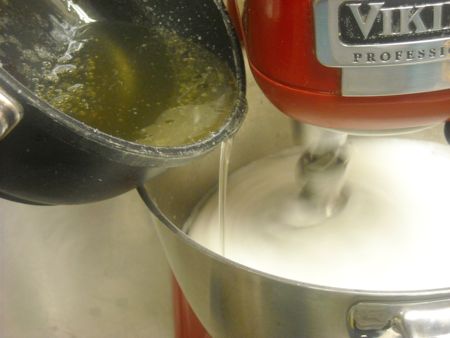
Pour the syrup into the sweet spot between the edge of the bowl and the shoulder of the whisk. You don't want it to get thrown all over the place. The syrup can be pretty thick, and it hardens quickly, which is why I prefer a non-stick pan for this. It slides out of the pan without needing to be scraped.
Once the syrup is in, the whites get pretty warm:
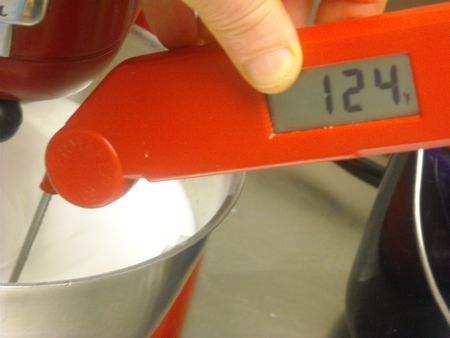
The mixer is running this whole time; after the syrup is in you can turn the speed down a bit, to medium-high. After 5 minutes, this is what your meringue will look like:
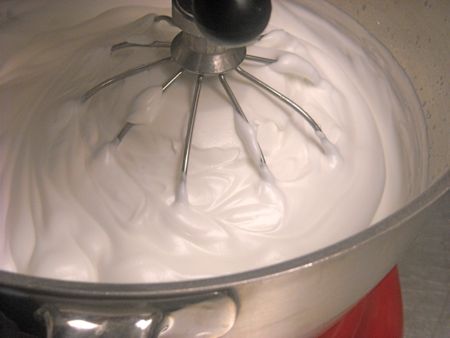
Big and fluffy, and silky smooth. So far, so good. Now we want this to cool down so we don't melt or break the butter when we add it to the bowl. I will often give the process a little help with an ice pack.
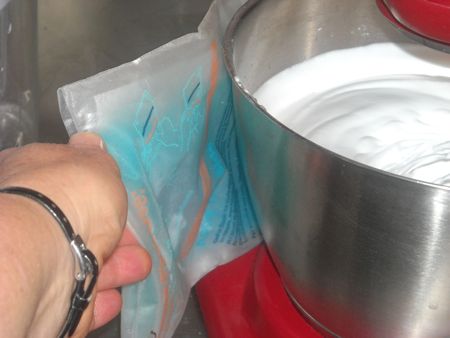
A few minutes more... how are we for temperature?
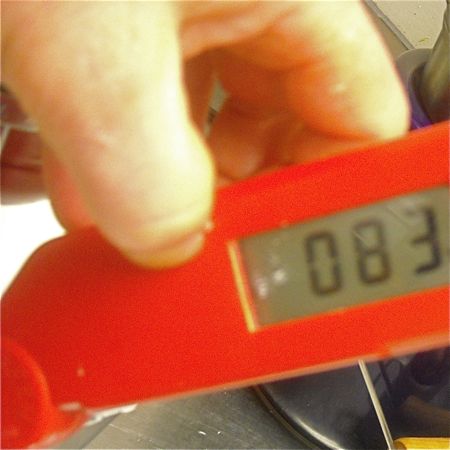
Butter ready?
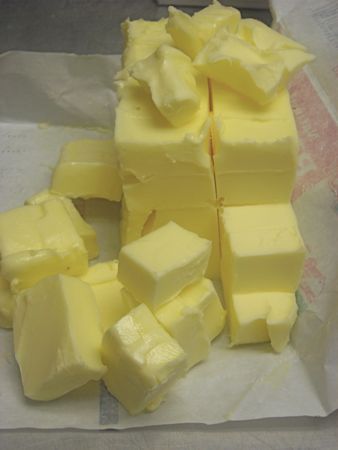
Yup, standing by.
This is another turning point in the process. I need to take a moment here to tell you that I worked very hard to get photos of what can happen to buttercream.
Specifically, I wanted to break it on purpose to show you how to fix it. Andrea and Frank can vouch for the fact that it took me a week to finally make a batch that broke. The whole thing made for an absurd, upside-down existence, where every time I made a successful buttercream I was stomping around in a huff.
I did EVERY SINGLE thing I tell you not to do in this blog, and I still couldn't ruin the stuff. Meringue powder, fresh egg whites, butter as hard as a rock, soft butter thrown into 100°F meringue, nothing. It all worked.
I turned into my mother at one point, hearing myself say, "Oh, for crying out loud!" in exactly her voice.
But back to how to get it right if you're new to this stuff.
When you first put the butter into the meringue, it will deflate some.
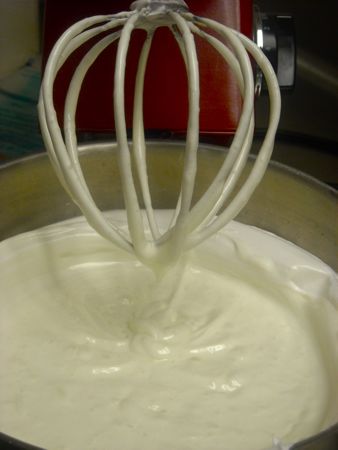
As you keep adding butter, the mixture will likely go through a stage where it looks broken and curdled. 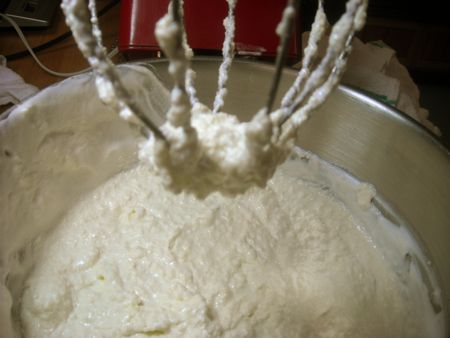
This is where you must trust yourself (and me) and soldier on. As you keep beating and adding butter, the frosting will start to come together around the whisk, almost like magic.
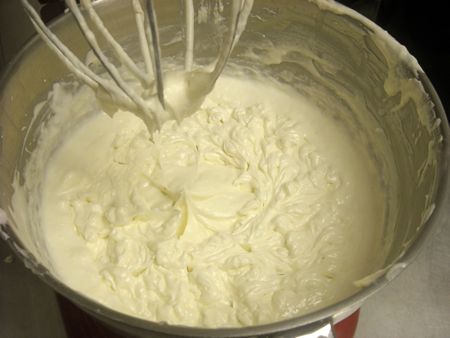
See how the center is shaping up, while the outside is still yucky? Another minute or two will finish bringing the frosting together.
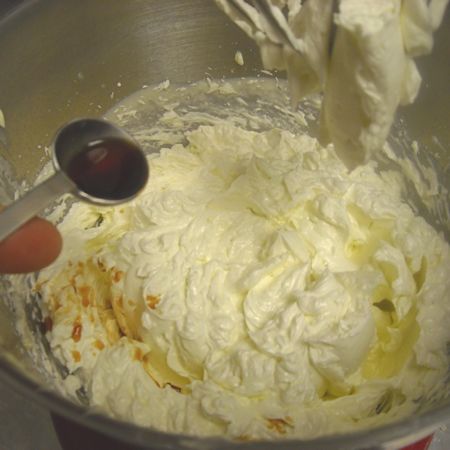
Gorgeous, eh? Now I'm adding some vanilla. This is the point where you can play around in flavor land. In summer I've often taken some of the frosting out for the outside of a cake, then taken the rest and mixed in a couple pints of fresh raspberries and used that frosting for between layers.
You can add citrus zest and 1 to 2 tablespoons of juice. Or some melted, cooled chocolate (no more than 2 ounces, or the frosting can't hold it). Espresso powder? Sure. You might want to dissolve it in a tablespoon of cream first, otherwise your frosting will have freckles. I'm a big fan of coconut milk powder and coconut flavoring. Makes fabulous buttercream that's nice and stable.
Before I finish my tale, let's cover a few more bases.
Storage: Buttercream will keep up to 1 week in the refrigerator (longer than that, and you could see some mold start to form). It freezes beautifully, though. I recommend dividing up the batch into 2 or 3 containers. That way it will temper more quickly when you want to use it.
To use from the freezer, defrost in the refrigerator overnight, then let it come to room temperature before using. I know some people who have successfully thawed buttercream in short, low bursts in the microwave, but I'm not that brave. In any case, if you see any weeping or separation, throw the frosting in the mixer and beat it briefly to bring it back together.
Secrets and confessions: I love the flavor of an all-butter buttercream. But when I'm making a wedding cake that has to sit on a table in the summertime for a few hours, I'll frequently sneak in 1/2 cup of vegetable shortening when adding the butter. The shortening has a higher melting point and will keep things more stable under to0-warm conditions.
Shortening can also "save" a curdled frosting when nothing else seems to be working. Now that most of the trans fats have been removed from vegetable shortenings, I don't feel as guilty about this "insurance policy."
Waiting for the meringue to cool down is a pain. There. I've said it. Other than the ice pack trick, and if I'm feeling particularly defiant, I'll ignore my own advice about butter being too cold and throw half a pound of frozen butter chunks into the warm meringue at first, trusting the heat to melt the butter and the cold to bring down the meringue's temp at the same time. This is, I repeat, a high-risk strategy.
Now, to finish the tale. In my quest to make bad buttercream, I tried adding soft butter to hot meringue. This is what happened:
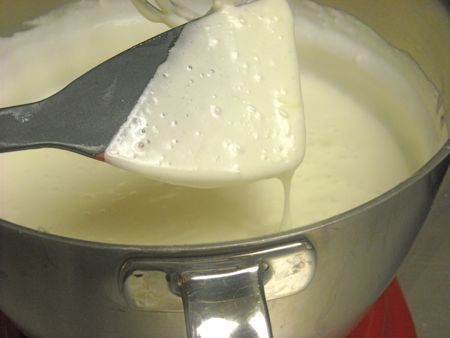
Butter soup. But not broken. All it took was some more, colder butter (not hard, just cooler) to bring everything back in line.
I finally begged Frank to tell me how his pastry cooks had achieved broken buttercream. He told me to let my meringue cool completely, then hit it with lots of cold (barely plastic) butter. So I did. FINALLY I got some awful-looking glop.
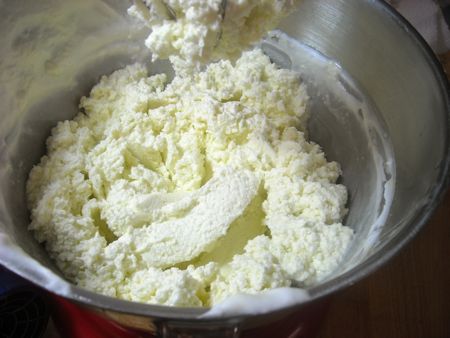
At the Ritz, Frank would go for his blowtorch at this point. I reached for the at-home version:
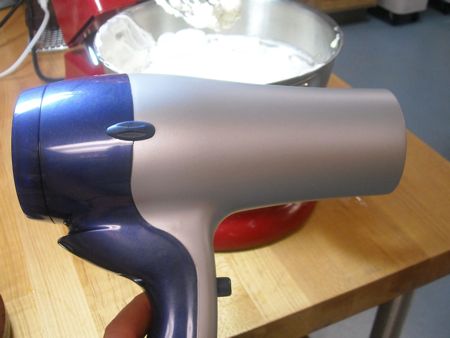
A little warm air on the outside of the bowl with the mixer running, and voilà:
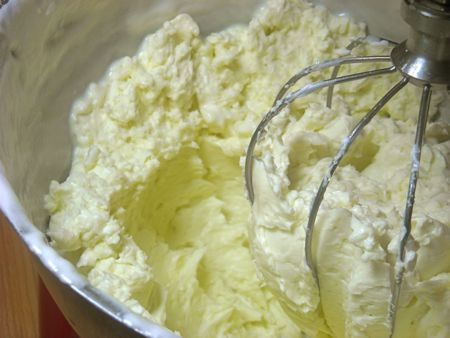
The frosting at the edge looks a little melted. The whisk keeps bringing it back into the center, raising the temperature for the whole bowl just enough to make the emulsion come back together.
By now, my mixer is getting a little pooped. I've actually had it shut itself off because the motor got too hot while it was going... going... going to cool the meringue. When that happens, I get another icepack.
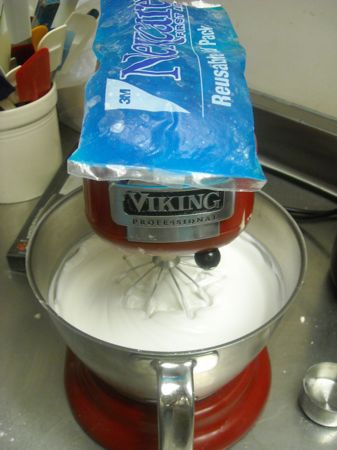
After a week of butter, sugar syrup, and lots and lots of egg whites, I finally had the pictures I needed. And well over 2 gallons of buttercream.
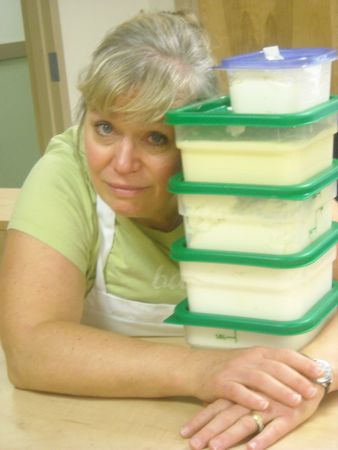
Hopefully, this amount of information can spare you some angst and some time. If you're interested in learning what you can do with this wonderful stuff, check out our cake styling guide.
Please read, make, and rate the recipe for Italian Buttercream on our site.